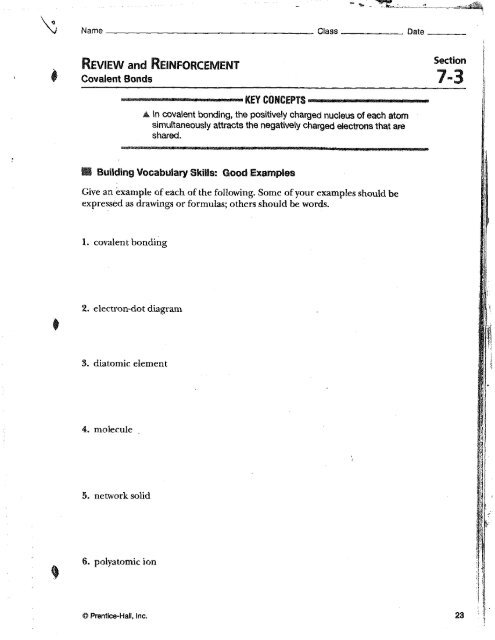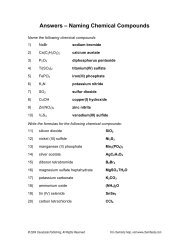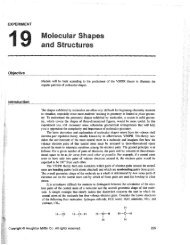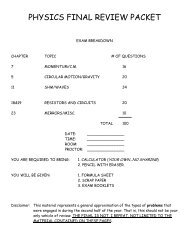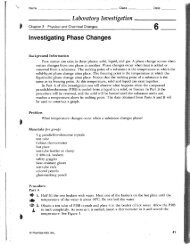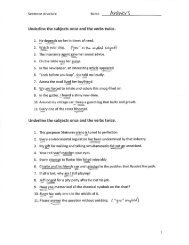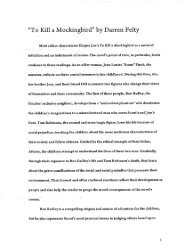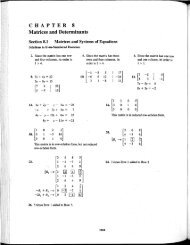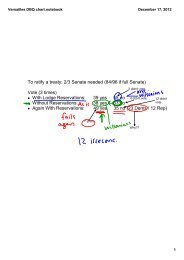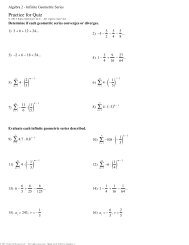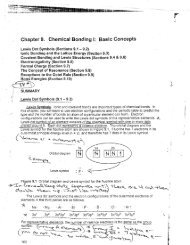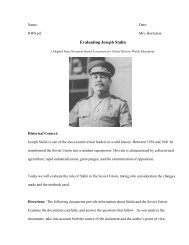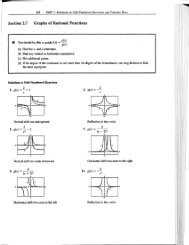REVIEW and REINFORCEMENT Covalent Bonds .......... KEY ...
REVIEW and REINFORCEMENT Covalent Bonds .......... KEY ...
REVIEW and REINFORCEMENT Covalent Bonds .......... KEY ...
Create successful ePaper yourself
Turn your PDF publications into a flip-book with our unique Google optimized e-Paper software.
Name Class ¯ Date<br />
<strong>REVIEW</strong> <strong>and</strong> <strong>REINFORCEMENT</strong><br />
<strong>Covalent</strong> <strong>Bonds</strong><br />
.......... <strong>KEY</strong> CONCEPTS~<br />
In covalent bonding, the positively charged nucleus of each atom<br />
simultaneously attracts the negatively charged electrons that are<br />
shared.<br />
Section<br />
7-3<br />
Building Vocabulary Skills: Good Examples<br />
Give an example of each of the following, Some of your examples should be<br />
expressed as drawings or formulas; others should be words.<br />
1. covalent bonding<br />
electron-dot diagram<br />
3. diatomic element<br />
4. molecule<br />
5. network solid<br />
6. polyatomic ion<br />
@ Prentice-Hall, Inc. 23<br />
~
[] ~orming <strong>Covalent</strong> <strong>Bonds</strong>: Applying the Main Ideas<br />
Examine the atoms in the following diagrams. Then answer the questions that<br />
follow.<br />
1. Draw electron dot formulas to show how atom A forms compounds with atoms B through<br />
E (Hint: You will need to use more than one atom A to form some compounds.)<br />
2. Which of these atoms’form diatomic molecules? Write the molecular formulas for these<br />
molecules.<br />
3. Several of these atoms form polyatomic ions. Draw an electron dot formula for at least<br />
one of these ions <strong>and</strong> name the ion.<br />
24


